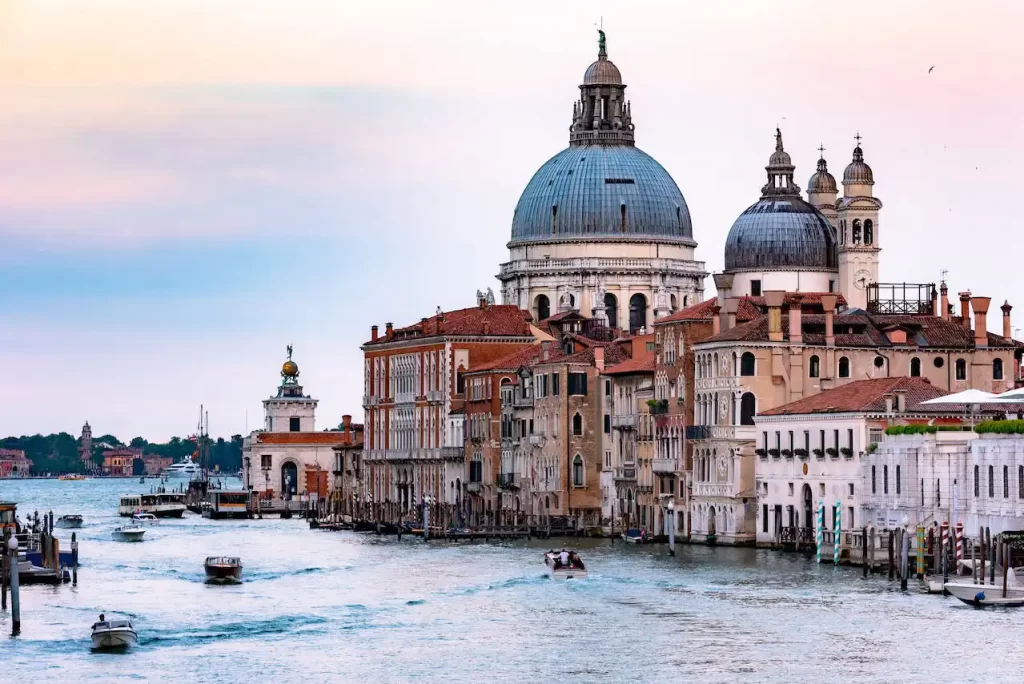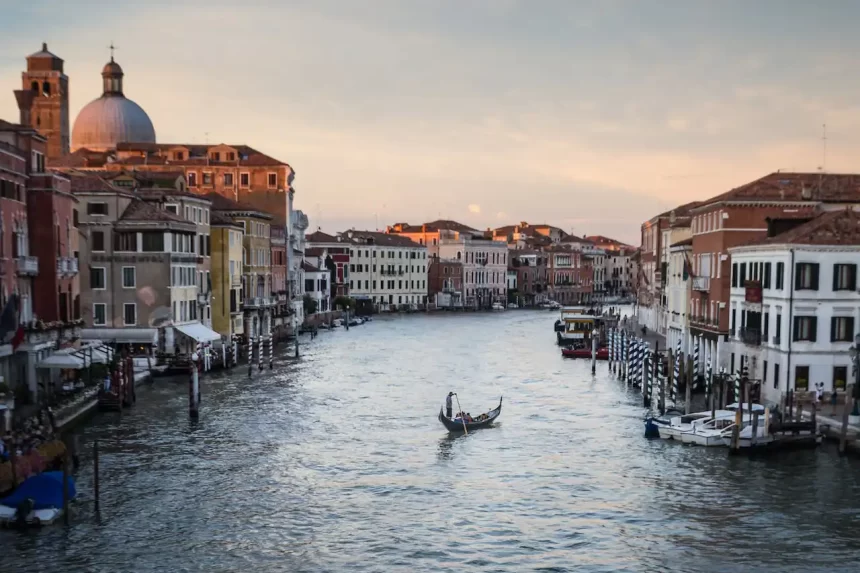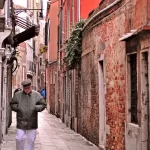Overview of Venice, Italy
Venice, the enchanting city of canals, bridges, and splendid architecture, lies in northeastern Italy. It’s a city built on a lagoon, with a network of canals instead of roads. Venice is famed for its historical significance, artistic heritage, and unique urban design. From the iconic gondola rides on the Grand Canal to the stunning St. Mark’s Basilica, the city offers a blend of historical, cultural, and culinary experiences that captivate tourists from around the world. This comprehensive guide explores the city’s key attractions and hidden gems, providing a detailed insight into what makes Venice a must-visit destination.
Grand Canal

The Grand Canal, Venice’s main artery, is a spectacle of grandeur and history. Stretching over 3.8 kilometers, it’s lined with over 170 buildings dating from the 13th to the 18th century. A gondola ride along the canal offers a majestic view of these structures, reflecting the wealth and artistry of the Republic of Venice. The canal is not just a tourist attraction but a bustling waterway used for transportation, with gondolas, vaporettos (water buses), and private boats weaving through its waters. Key sights along the Grand Canal include the Rialto Bridge, the oldest of the four bridges spanning the canal, and the Ca’ d’Oro, a striking example of Venetian Gothic architecture. The canal also hosts the annual Venice Regatta, a colorful and competitive boat race. Exploring the Grand Canal is essential for understanding Venice’s past and present, offering a glimpse into the city’s heart and soul.

St. Mark’s Basilica
St. Mark’s Basilica, a jewel of Byzantine art, stands majestically in the Piazza San Marco. This cathedral, built in the 11th century, is known for its opulent design and gold ground mosaics that depict stories from the Bible and the history of Venice. The basilica’s exterior is an artistic marvel, adorned with a mix of eastern and western architectural styles, symbolizing Venice’s position as a bridge between East and West. Inside, the basilica houses a treasure trove of art, including the Pala d’Oro, a stunning altarpiece adorned with thousands of gems. The basilica’s campanile (bell tower) offers a panoramic view of the city. St. Mark’s Basilica is not only a place of worship but also a symbol of Venetian wealth and power, reflecting the city’s historical significance as a major maritime power.
Doge’s Palace

The Doge’s Palace, once the residence of the Doge (the ruler of Venice), is an architectural masterpiece showcasing Gothic and Renaissance elements. This palace, adjacent to St. Mark’s Basilica, was the heart of Venetian political power and administration. Its ornate façade, with pink and white marble, overlooks the Piazzetta San Marco. Inside, the palace is a testament to Venice’s artistic and cultural heritage, with rooms adorned with works by masters like Titian, Tintoretto, and Veronese. Highlights include the Sala del Maggior Consiglio, where the Great Council met, and the Bridge of Sighs, connecting the palace to the prisons. The Doge’s Palace offers a journey through the history of the Venetian Republic, its governance, and its judiciary system, providing a comprehensive understanding of the city’s past glories and tribulations.
Rialto Bridge

The Rialto Bridge, an iconic symbol of Venice, spans the Grand Canal at its narrowest point. This stone arch bridge, built in the late 16th century, replaced earlier wooden bridges that had collapsed. The Rialto Bridge’s design, featuring two inclined ramps with shops on either side, was considered revolutionary at the time. Today, it’s a bustling spot, offering picturesque views of the Grand Canal and housing various shops selling souvenirs, jewelry, and local crafts. The bridge’s history is closely tied to the Rialto market, once the commercial heart of Venice. Visiting the Rialto Bridge and the nearby market offers an insight into the city’s historic trade and commerce, making it a must-visit for understanding Venice’s economic past and present.
Murano and Burano
A short boat ride from Venice takes you to the islands of Murano and Burano, each known for its unique craft. Murano, famous for its centuries-old glassmaking tradition, offers live demonstrations in glass factories and a chance to purchase exquisite glassware. The Murano Glass Museum showcases the history and art of glassmaking. Burano, on the other hand, is known for its lace-making and brightly colored fisherman’s houses. The Lace Museum on the island exhibits the intricate art of lace-making. Both islands provide a quieter, more authentic experience of Venetian life and are a testament to the city’s enduring artisan traditions. A visit to these islands is not just about shopping but about witnessing the preservation of age-old crafts that are integral to Venetian culture.

Venetian Cuisine
Venetian cuisine, with its emphasis on fresh seafood and local ingredients, offers a delightful culinary journey. Traditional dishes like sarde in saor (sweet and sour sardines), risotto al nero di seppia (squid ink risotto), and baccalà mantecato (creamed cod) reflect the city’s maritime connections. Venetian tapas, or cicchetti, served in local bacari (wine bars), provide a taste of local flavors and a glimpse into the city’s social life. The famous Venetian aperitif, Spritz, made with Prosecco, Aperol, and soda water, is a must-try. Exploring Venetian cuisine is not just about eating; it’s about experiencing the city’s culinary history, its connection to the sea, and its social traditions.
Art Galleries and Museums
Venice is a haven for art lovers, home to an array of galleries and museums showcasing a rich collection of art and history. The Peggy Guggenheim Collection, housed in the Palazzo Venier dei Leoni, features a remarkable collection of modern art. The Accademia Gallery houses a collection of Venetian art from the Byzantine to the Rococo period, including works by Bellini, Titian, and Canaletto. Other notable museums include the Ca’ Rezzonico, dedicated to 18th-century Venetian life and art, and the Palazzo Grassi, known for its contemporary art exhibitions. These institutions not only display art but also narrate the story of Venice’s evolution as a cultural and artistic hub, offering insights into the city’s past and present through the lens of art.
Wander the Narrow Alleys
One of the best ways to experience Venice is by getting lost in its labyrinth of narrow alleys, quaint bridges, and hidden squares. These backstreets, far from the tourist crowds, reveal the authentic charm of Venice. Here, you’ll find artisan workshops, small local cafes, and quiet canals untouched by the hustle and bustle of the main tourist areas. This exploration is about discovering the lesser-known aspects of Venice, its everyday life, and the unique architecture of its residential buildings. Wandering through these alleys allows visitors to connect with the city’s true spirit and uncover its hidden treasures.
| Attraction | Best Time to Visit | Ticket Charges |
|---|---|---|
| Grand Canal | April to June, September to November | Free (public space), Gondola rides vary |
| St. Mark’s Basilica | April to June, September to November | Free entry to Basilica, Museum: €5, Pala d’Oro: €2, Combined ticket: €13 |
| Doge’s Palace | April to June, September to November | Standard: €25, Reduced: €13, Family: €55 |
| Rialto Bridge | April to June, September to November | Free (public space) |
| Murano Island | April to June, September to November | Free (public space), Glass factory tours may have fees |
| Burano Island | April to June, September to November | Free (public space) |
FAQ
Q: What is the best time to visit Venice? A: The best time to visit Venice is during spring (April to June) or fall (September to November) when the weather is pleasant, and the city is less crowded.
Q: Do I need to worry about high water in Venice? A: Acqua alta (high water) can occur in Venice, especially in late autumn and winter. It’s advisable to check the forecast and be prepared with waterproof footwear.
Q: Is Venice suitable for family trips? A: Yes, Venice has a lot to offer for families, including interactive museums, gondola rides, and family-friendly restaurants.
Q: How do I get around in Venice? A: Venice is best explored on foot and by water transport like vaporettos (water buses), water taxis, and gondolas.
Q: Are there any entry fees for St. Mark’s Basilica or Doge’s Palace? A: Yes, both St. Mark’s Basilica and Doge’s Palace have entry fees. It’s recommended to buy tickets in advance to avoid long queues.
Q: Can I take a day trip to Murano and Burano from Venice? A: Yes, both Murano and Burano are easily accessible by vaporetto and make for excellent half-day or full-day trips.





















